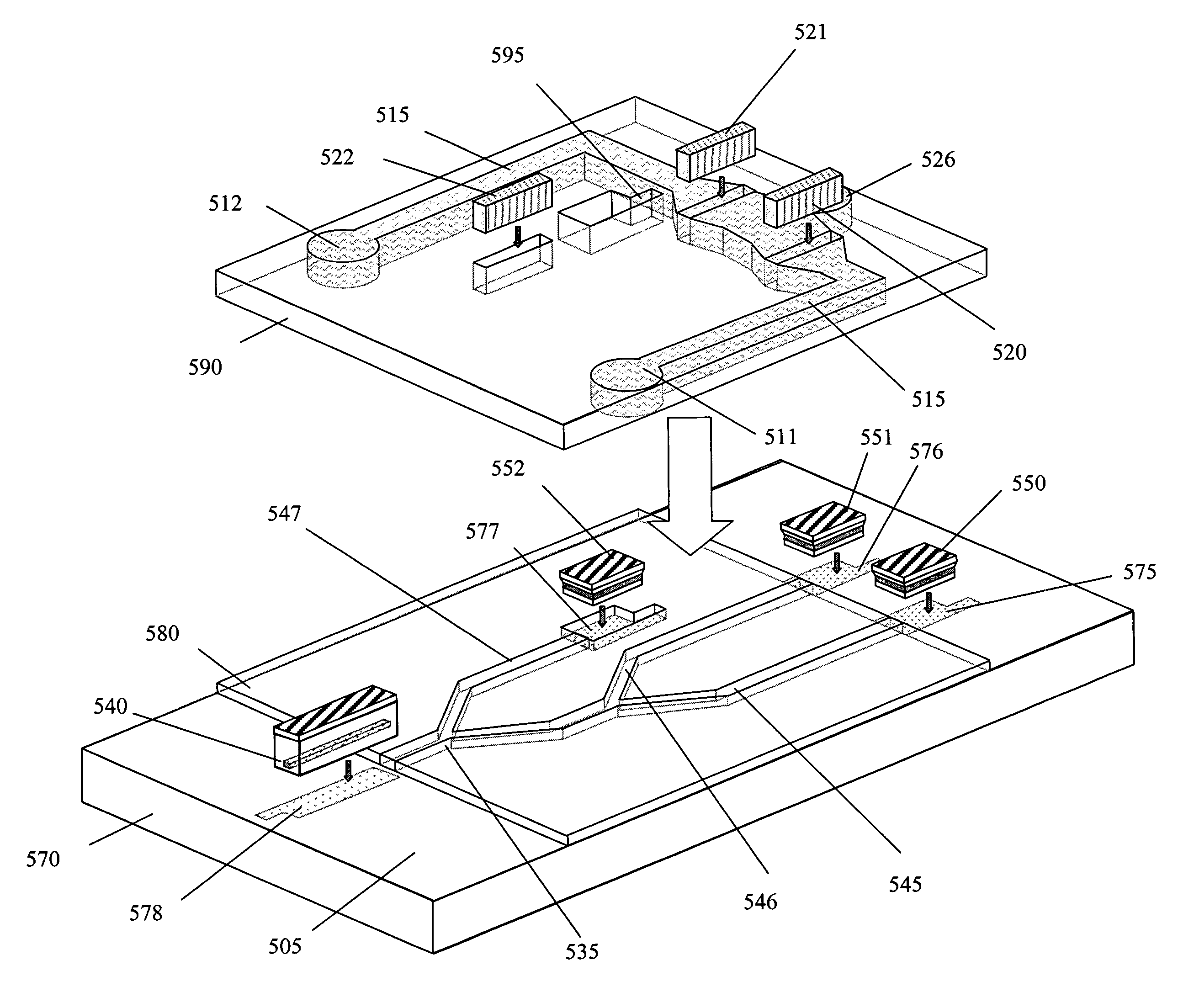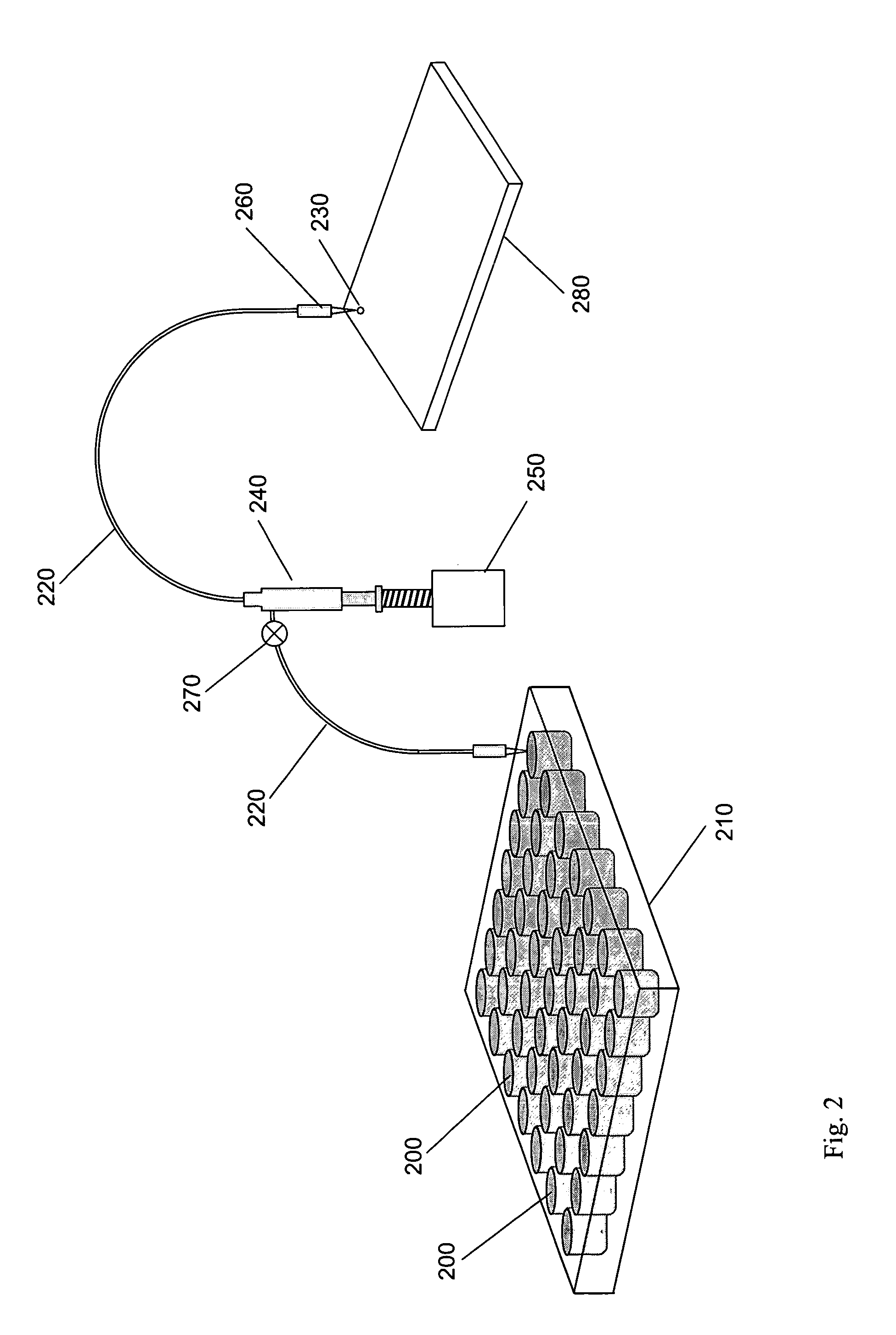Detection and identification of biological agents using Bragg filters
a technology of biological agents and detection sensors, applied in the field of sensor systems, can solve the problems of inability to identify particular agents, inability to provide specificity to identify the present agents, complex devices, etc., and achieve the effect of high detection sensitivity and rapid respons
- Summary
- Abstract
- Description
- Claims
- Application Information
AI Technical Summary
Benefits of technology
Problems solved by technology
Method used
Image
Examples
Embodiment Construction
[0058]In an embodiment of the present invention as shown in FIG. 1, a biological and chemical target agent sensor 10 has a sample collection subsystem 20 that continuously draws samples of air, water, and soil from the environment. A transfer subsystem 30 transfers the sample 40 from the collection subsystem 20 to working fluid 50. A dispenser subsystem 60 dispenses the working fluid 50 containing the sample into a detector module array (“DMA”) of a detection / identification (hereafter “ID”) subsystem 70.
[0059]The dual-function ID subsystem 70 sends the sample data from the DMA through an electronic signal 80 to a data storage subsystem 90. Data storage subsystem 90 obtains and continuously compiles data from the DMA. The data within data storage subsystem 90 may either be accessed directly or may be sent via an appropriate transmission system, such as telemetry subsystem 110, for recording and analysis. The transmission system may send data at pre-selected intervals in batch format ...
PUM
| Property | Measurement | Unit |
|---|---|---|
| temperature | aaaaa | aaaaa |
| areas | aaaaa | aaaaa |
| wavelengths | aaaaa | aaaaa |
Abstract
Description
Claims
Application Information
 Login to View More
Login to View More - R&D
- Intellectual Property
- Life Sciences
- Materials
- Tech Scout
- Unparalleled Data Quality
- Higher Quality Content
- 60% Fewer Hallucinations
Browse by: Latest US Patents, China's latest patents, Technical Efficacy Thesaurus, Application Domain, Technology Topic, Popular Technical Reports.
© 2025 PatSnap. All rights reserved.Legal|Privacy policy|Modern Slavery Act Transparency Statement|Sitemap|About US| Contact US: help@patsnap.com



